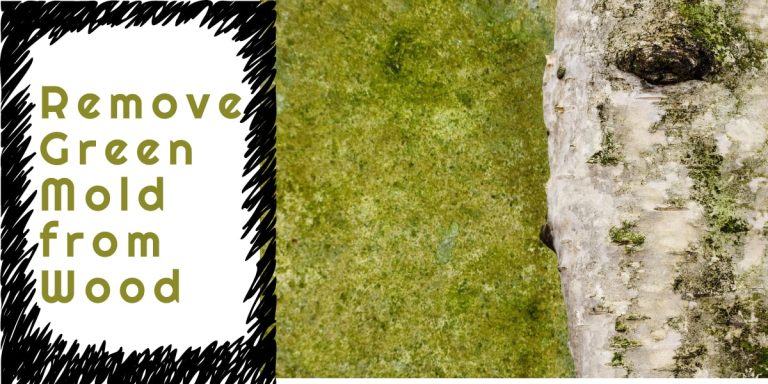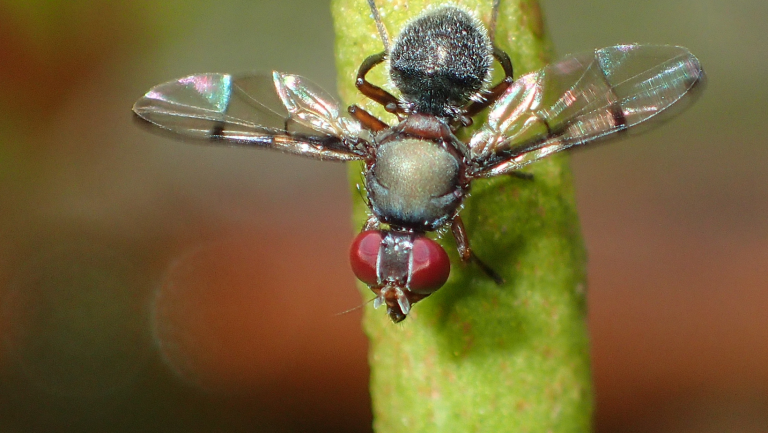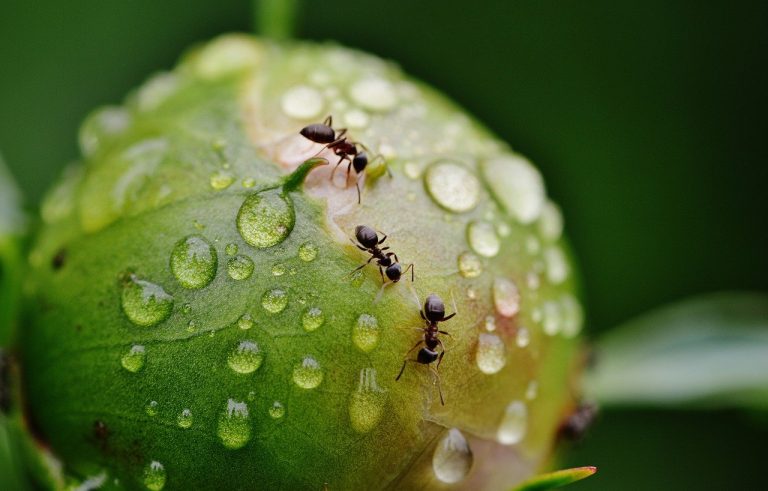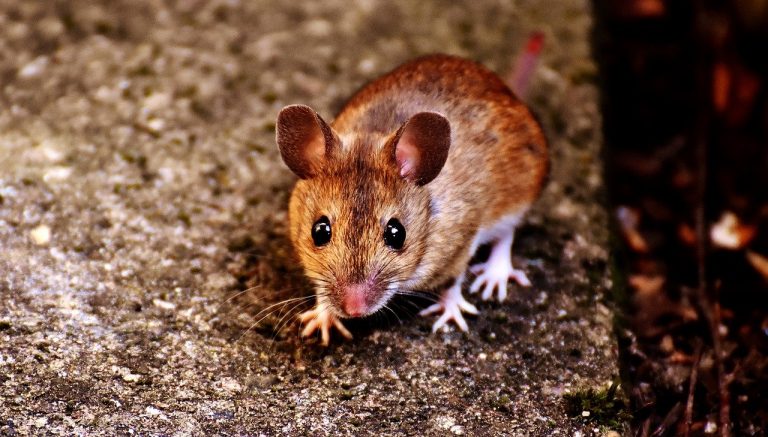How to Get Rid of Bed Bugs? Natural, Herbal, and Chemical Treatment
Bed bugs are insects of the genus ‘Cimex’ that feed on human blood. Though the bites are not usually dangerous, they can cause skin rashes, psychological effects, and allergic symptoms. Bed bug bites are caused mainly by two species: Cimex lectularius and Cimex hemipterus.
They range between 1 to 7 mm and spread by crawling between nearby locations. Bed bugs spend a lot of time in dark, hidden locations like mattress seam and cracks in a wall. Eliminating the bed bugs from home is a very tedious job because they can survive without feeding for as long as 70 days.
You need to raise the temperature of the home to 500 C for at least 90 minutes; you will also need to vacuum, use repeated pesticides, etc. Bed bugs are spread everywhere in the world. They are known as human parasites for thousands of years.
There are around 90 species of bed bugs but thankfully only 3 are biting bugs. These 3 types are C. Lectularius, C. Hemipterus, and L. Boueti. C. Lectularius and C. Hemipterus live with humans – it is them who make their household in dark places in the home like mattress seams, sofas, carpets, and wall cracks.
L. boueti is found only in West Africa and South America because they prefer tropical climates. They feed on bats’ blood. The two types of common bugs have a wider prothorax and flatter edges than the tropical bugs. It is very difficult to distinguish the type of bug for a common man, and they generally don’t need to. Getting rid of them is their priority and not identifying them.
The habitats and the bites are also identical to both the bug types. There are also ‘swallow bugs’ and ‘bat bugs’ that appear similar to bed bugs and cause similar bites.
Swallow bugs prefer to feed on cliff swallows and usually dwell in bird nests but they migrate inside along with the swallows. Bat bugs like a meal of bat blood. It is important that a professional should identify between swallow and bat bugs against bed bugs as managing mammal, rodent, and insect nesting is important to locate these pests and sources of infestation.
How to Get Rid of Indoor Bed Bugs?
It is advised to call for a professional if you have an infestation of bed bugs in the house because you can’t locate their source and hence, elimination may become difficult. Trying to eradicate bed bugs yourself is wasting your time and the methods you apply may not work on them to get eliminated.
However, based on the low infestation and as a measure of precaution, some methods are suggested as natural home remedies to get rid of indoor bed bugs.
Natural Home Remedies to Get Rid of Indoor Bed Bugs
It is a debate point that whether the home remedies work on bed bugs or not. But then too, you can try some methods which can keep them at bay till you get the professional services on board.
Here are those few things to try –
- Hot water – If you are having bed bug infestation, then, it must be in your bedding, blankets, and even clothing. You can wash them all using hot water. Heat treatment is very effective to kill bed bugs as they get dehydrated due to intense heat.
- Vacuum – Vacuum your linen, drapery, bedding, and even box bed neatly. Loosen bugs or eggs with a brush before vacuuming. After completion, remove the vacuum bag and seal it before disposing of it.
Don’t forget to clean the vacuum also. - Steam cleaner – Steam cleaner is a fast-acting and more effective method. You can apply steam cleaner on bedding, box spring, mattress, etc with more penetration which will yield better results.
- Diatomaceous earth – Food-grade diatomaceous earth is a chemical-free powder that eliminates many pests.
It will dehydrate the bed bugs and kill them through the result can take a week to complete. Use a face mask and gloves while handling it. - Baking soda – Baking soda also dehydrates the bed bugs by removing moisture. You have to sprinkle a light layer where you think bugs are. Let the layer be for one week and then, vacuum the areas where you have sprinkled baking soda.
You need to do it often till the elimination of bugs or eggs. - Black walnut tea – Black walnut tea is antifungal, antibacterial, and insecticidal. Place the black walnut tea bags around the areas which you feel are infested by bed bugs.
Also, you can spread dry tea leaves on your mattress and bedding to remove the bed bugs along with eggs. - Cayenne pepper – You can try using cayenne pepper with oregano and ginger. The strong odor of ginger and the heat of cayenne pepper mixed with the heady smell of oregano essential oil will help to repel the bed bugs.
Take one teaspoon each of cayenne pepper, oregano oil, and grated ginger, and a cup of water. Mix in a pan and let it boil for seven minutes. Strain and transfer in a spray bottle and spray the affected areas. - Tea tree oil – Tea tree oil is antiseptic, antibiotic, antiviral, and antifungal along with having antiparasitic properties. It can eliminate parasitic bed bugs but if there is less infestation.
Dilute 20 drops of tea tree oil with water in a spray bottle and apply on mattress, furnishings, cushions, cabinets, curtains, and similar. - Peppermint or lavender oil spray – Lavender oil can be sprayed on possible hiding places of bed bugs.
Peppermint oil will help you to repel the bed bugs due to its strong scent. If used in combination, it can get rid of bed bugs from your house. - Borax – Borax is a natural household which helps to kill the bed bugs. Sprinkle a generous amount of borax on the affected area and leave it at least 24 hours for effect. When bed bugs deluge with it, they get suffocated and die out of it.
Borax can be used while washing the clothes too. - Vinegar – Vinegar is an effective contact treatment but advised to use in combination with other methods.
You can spray vinegar without dilution directly on the furniture or cracks where bed bugs will be hiding. Vinegar kills bed bugs but to kill larvae, use it along with DE or vacuum. - Cinnamon – One can use cinnamon leaf oil but remember that it can only deter the bed bugs and not kill them. However, you can make it effective with other methods.
- Proper maintenance – You must know that the multiplication of bed bugs is very fast. Even if you find a one-bed bug, it’s a red flag, and you must make sure to inspect and clean the whole house by vacuuming or steam cleaning.
Check the old furniture for cracks and check the presence of bed bugs at other places too. - Take benefit of sunlight – Whenever possible put all the bedding, mattress, pillows, etc. under the bright sunlight. The intensity of heat is too much for bed bugs to cope with. It kills them effectively without using any chemicals.
- Natural insecticides – There are some natural insecticides without any side-effect that can be used to treat bed bugs. It should be properly applied to the bed, furniture, and other places for effectiveness.
How to Get Rid of Bed Bugs with Pets in the House?
It takes very few bed bugs to create an infestation. Before you know it, they are well dispersed and hide in difficult places, making it almost impossible to eradicate them. Apart from their most favorite place bedroom, bed bugs can be found in the living room too. Infestation spreads from one room to another room.
It becomes even more difficult with the presence of pets in the home. We all know that bed bugs need very strong and penetrating treatment to try to eliminate them. With pets in the house, it is not possible or your pet needs to be disciplined.
- While exterminators are at work, keep your pets away outside of the house for the instructed period.
- If the whole house needs to keep vacant, then, you have to move out with your pet.
- Steam cleaning or hot treatment can be done, but then, again, you must make sure that pets should not touch the steamer.
- If fumigation has to be done then the pets must be kept in separate rooms as pets will have different sensitivity to chemicals.
All in all, you need to keep the pets away when any chemical treatment is underway in your home.
Chemical Treatment to Get Rid of Indoor Bed Bugs
The chemical treatment for the bed bugs must be done with utmost care as some concentrated chemicals need to be used for effectiveness.
- Pyrethroids – Pyrethroids are synthetic chemical insecticides commonly used to control indoor bed bug infestation. It is a lethal compound that can flush out bugs from their hiding places and kill them.
Some pyrethroid pesticides come in the form of a total release fogger. - Pyrethrins – Pyrethrins are botanical insecticides prepared from chrysanthemum flowers. These are effective to find and kill bed bugs.
However, in those colonies where bed bugs are resistant, both pyrethrins and pyrethroids have to be used in combination to get the desired results. - Boric Acid – While using boric acid, proper care has to be taken not to inhale it while spreading.
Also, if you are spreading the boric acid on bedding, then, you must not use it for at least 6-7 hours. Boric acid is effective desiccant that acts on the bed bug to dehydrate it and kill it. - Biochemicals – Cold-pressed directly from seeds of the neem tree, the neem oil is a certified pesticide for bed bug treatment. The oil contains several compounds that have medicinal and insecticidal properties.
Even products like toothpaste, shampoo, soaps, and cosmetics containing neem oil are effective in bed bug control. - Pyrroles – The pro-insecticide compound Chlorfenapyr is the registered pyrrole pesticide for bed bugs. The biological activity of this depends upon its activation to form another chemical and it disrupts some functions in bed bugs’ cells causing its death.
- Neonicotinoids – Due to the property of bed bugs to quickly get resistant to pesticides, chemicals with different techniques are brought in to use. Neonicotinoids cause the failure of nerves in the nervous system of bed bugs acting as their nicotinic receptors.
- Insect Growth Regulators – Growth regulator chemicals either helps insect grow too rapidly or stop their growth. Some regulators work on specific cells of insects mimicking juvenile growth hormones in insects.
In the case of bed bugs, the production of chitin (the compound which makes their external shell hard) is intercepted to stop their growth as an adult. - Silicates – The chemicals from this group include diatomaceous earth. These are silica-based chemicals and they destroy the bed bug’s waxy, protective outer shell and kill them through dehydration.
The effects are physical so, the chances to strengthen the resistance are sleek. - Carbamates – Bendiocarb and propoxur are members of this category. As per results, these are more effective than the pyrethrins and pyrethroids. However, it is worrisome that the resistance is increasing.
- Foggers or Bug Bombs – Foggers are toxic to humans, hence, maximum care must be taken while doing the treatment. Read the label carefully and leave the room when fogging is on.
Control Measures on the Bed Bug Infestation
When you have a bed bug infestation in your home, initially you will not feel anything wrong but some night, for sure, you are bound to lose your sleep due to bed bug biting. Due to that habitat of bed bugs, they will first hide in your bedding for some days and once they reach their comfort level, they will come out.
You need to know what measures you can take at least to control their biting and growth. Take note of the listed following points.
A Systematic Approach to Control the Bed Bugs
If you practice the following procedures, it will help reduce the number of bed bugs in your house. Subsequently, try to eliminate them with treatment.
- Reduce clutter – Remove all personal items like stuffed animals, soft toys, blankets, electronics, etc, or anything that is not going to stay in the room permanently. However, while removing, also take care to seal it in individual bags.
- Wash infested garments and linens – Periodic heat washing of garments and linens are necessary if infested.
To prevent infestation, you can regularly wash the clothes and drapery. Also, inspection to be carried out for any signs of infestation-if you feel so. - Dismantling cleaning – To expose the bed bugs hidden sites is a very essential part of the process.
For this, you need to dismantle the bed frames and sanitize them. Keeping bedding or box spring in the sunlight will help you to reduce the bed bug number. If there is no infestation, keep them encased and inspect them regularly. - Drawer inspection and cleaning – It is also important to remove and inspect the drawers from kitchen and bedroom cabinets. The same applies to the dressing tables too. Since these are less operated items, care must be taken to avoid bed bugs in them.
- Deep cleaning – Clean the infested area with a hard brush to dislodge eggs. Vacuum extensively in cracks and crevices of the furniture and along baseboards on the wall. Vacuum along with the bed stands, rails, headboards, footboards, bed seams, tufts, edges of bedding as well as the edges of the carpet.
- Caulk and seal – Caulk and seal all holes where pipes and wires pass from the wall and floor. Fill cracks around baseboards and hoarding to reduce the harbourage area for bed bugs.
Bed Bugs Inspection
A piece of advice – as the common bed bug cannot be seen easily with the naked eye, it is better to use a magnifying glass to locate them.
- Look at any place that offers darkness, isolation, and protection to the bed bugs.
- Look for the adjacent rooms for their activity where infestation is found. It is possible that you may find signs of fecal spots they will leave.
You can also use an insecticide aerosol to flush the bed bugs out from their suspected hiding place. The places listed below should be your first concern to inspect for any signs of infestation of bed bugs.
- The Mattress and box spring – Pay very close attention to seams and tufts along the edges. Inspect the mattress from the bottom side too, where you may find more bed bugs than the upper side.
Rips of the mattress fabric are the ideal place for them to hide, so, give a special look at it. It is also essential to confirm whether the bed bugs have penetrated the mattress or not.
- Bed frame and head and footboards – Bed frame along with head and footboards must be checked using the flashlight to identify the presence of bed bugs. There are a lot of hiding places here and you cannot imagine where they would hide.
- Desk, chairs, dressers – Dismantle or take out all possible parts of the furniture, check seams and crevices with a flashlight. In an infested room, bed bugs can be often found in these places.
- Walls and carpet – Cracks, electric wires, switchboards, and wall hangings are the places where you need to inspect. The carpet has to be vacuum treated and kept in sunlight to heat it.
- Electronic and other appliances – Bitter but true, this equipment provides ample hiding places to bed bugs and we cannot do much rather than inspect and clean those potential hiding places.
- Prompt sign of infestation – The fecal and blood spots (looks like rust) seen around your bed sheet or pillow is the confirmation of the bed bugs infestation. These spots are of crushed bed bugs, maybe, under our body while it is at work.
They might get killed due to our movements in sleep.
Bed Bug Treatment Procedures
Often there is a doubt in one’s mind about the infested mattress.
Should you replace it or get it treated?
Well, if there are holes in the fabric, the chances of heavy infestation are high. Again, one needs to carefully destroy the affected mattress, so, that the bed bugs do not get scattered.
- Mattress safe encasements – Mattress Safe Products are bed encasements to place over a mattress or box spring. They are bed bug certified.
You can apply insecticide on the mattress and then, close the encasement. It has a hook inside which do not allow the bed bug to escape. As the bed bug life cycle is around one year, you have to keep this encasement for one year. - Active guard liners – ‘Active guard mattress liners’ can be placed on the bed and are effective as both preventive and active bed bug treatments. They kill bed bugs and mites within 72 hours and will prevent bed bugs from infesting mattresses.
It comes in single, queen, full, and king size that fits up to 17” in depth. - Mattress treatment with insecticides – The bed bugs will hide in the seams and folds of mattresses. They are very difficult to locate when they hide. You can use the following residual insecticides and dust on mattresses –
- Cimexa Dust
- Bedlam Plus Aerosols
- CrossFire Insecticide
- CrossFire Aerosols
- Temprid FX Insecticide
- Steri-Fab Bed Bug Spray
- Dust lasts longer than aerosols but aerosols can expose the tough hiding places of bed bugs forcing them to come out.
- Treat all baseboards and furniture (dressers, chests, nightstands, chairs, and coaches) – Several products work well for bed bugs. You can use residual liquid, aerosols, dust residual insecticides such as Spectre 2 SC, CrossFire Bed Bug Insecticide Concentrate, Temprid FX, D-Fense NXT, and Phantom Aerosol.
How to Find Bed Bugs Nests?
Bed bug nests are where they gather after feeding to breed, lay eggs and hide till the time they feel it is safe to be out. If you need to eliminate the bed bug infestation, it is very important to know where the nest is. The reproduction rate is so high that if you do not treat and kill each bed bug, it gets on adding.
The nest location is so difficult to find that even exterminators also struggle to find it out. In fact, this is the main reason why bed bugs are near impossible to eliminate. A single female is capable to repopulate the entire location.
- Nests can be located near where people sleep or rest. Likely to find in the bathroom and laundry room too.
- Due to their small size, they can hide and nest in any smallest place like crack, behind photo-frame, tiny screw holes on wall, in wall clock, etc.
- Inside the seam of the box spring, below bedding, in the folds of a mattress, etc are several places where you can find a nest.
- Inside the book-binding, bottom, or corner-folds of carpets, any small crack or hole in furniture are the places where you can locate a nest.
- Electrical cables and clamps can be a nesting place.
Along with the above places, any small place that can’t be easily seen is a potential place for a nest of bed bugs.
How to Treat Bed Bugs Bites?
Bed bugs being insects feed on the blood of animals and humans – as such, they are bound to bite. Though the bites are very rarely dangerous, they are too itchy and sometimes can cause infection and allergic reaction. Some people may not develop symptoms of bed bug bites but in case developed they will be like –
- Red and swollen, with a dark spot at the center of each bite.
- Itchy
- Arranged in lines or clusters, with multiple bites grouped.
You can have the following treatments if you have bed bugs bites –
- Apply calamine lotion or some anti-itch cream to bites.
- Take an oral antihistamine to reduce itching and burning.
- Use a pain reliever to reduce pain and swelling.
FAQ
Q. Where Are Bed Bugs Found?
- Bed bugs are primarily seen in developing countries but recently they are spreading rapidly in the USA, Canada, UK, and other parts of Europe.
- Bed bugs infestation usually occurs around or near the area where people sleep.
Q. Do Bed Bugs Spread Disease?
- Bed bugs are not known to spread the disease. They can annoy people because their biting irritates them and lose sleep.
- A secondary skin infection can take place if one scratches extensively at the biting area.
Q. What Health Risks Do Bed Bugs Pose?
- Bed bugs bite responses can range from absence of mark to a small bite mark, to a serious allergic reaction. An allergic reaction to several bites may need medical attention though the bed bugs are not dangerous.
Q. What Are the Signs and Symptoms of a Bed Bug Infestation?
- To get rid of giant crickets such as spider crickets, glue, or water traps are the best options. Crickets can’t get off the water if trapped. You can also try vacuuming them in.
Q. How to Get Rid of Crickets Under Carpet?
An easy way to identify a bed bug infestation is bite marks on the face, arms, neck, hands, or other parts of the body while sleeping. The signs include –
- The bed bugs’ exoskeleton after molting
- Bed bugs in the fold of bedsheets and mattresses
- Rust-like blood spots on the mattress and nearby furniture
- A sweet musty odor.
Q. How Did I Get Bed Bugs?
- Bed bugs are usually transported from place to place when people travel. The bed bugs travel in the seams and folds of luggage, overnight bags, folded clothes, bedding, furniture, and anywhere they can hide.
- The people travel with bed bugs without even knowing that there are some traveling with them, thus, infesting place to place.
Q. How Bed Bugs are Treated and Prevented?
- The best option to treat a bed bug bite is to avoid scratching the area and applying the antiseptic cream and take an antihistamine. The treatment for infestation is done by spraying insecticides.
- Ideally, you should opt to call professional pest control services to treat the bed bug infestation.







